► Small, hybrid hatch is all-new
► Up to 70.6mpg economy promised
► More fun to drive… but harsh ride
Though its character may be humble, demand for the Toyota Yaris over the last 25 years has been anything but. Since 1999, the Yaris has evolved from Japan’s lowly yet charming city runaround into a member of the hybrid supermini royal family, surpassing 10 million cars sold in 2023.
Now, for 2024 and in the year of the Yaris’s 25th birthday, Toyota has upgraded the Yaris range with new trim levels and an upgraded power unit for its top-spec cars.
What’s new?
For 2024, Toyota has upgraded the Yaris’ two top-spec trim levels – Premium and GR Sport – with more power, more tech and exclusive design options both inside and out.
Let’s start with power output. The enhanced three-cylinder, 1.5-litre hybrid engines in the Premium and GR Sport Yaris have been fettled with so they now produce 129bhp – 15bhp more than the base-spec models.
You can thank an uprated hybrid transaxle system and an adjusted power control unit for the extra poke, though it’s still delivered to the wheels via Toyota’s beloved CVT gearbox.
What does that translate to on the road? Well, a half-a-second quicker time (9.2 seconds) from 0-62mph over the standard Yarises.
Inside the cabin, you’ll see physical evidence of where your extra money has been spent. The GR Sport model gets a smattering of GR branding treatment with lashings of red stitching, sport seats and various GR logos for a racier feel.
The Premium Yaris’ cabin, meanwhile, is more measured than the GR Sport but even plusher, with blue stitching that matches the exclusive Neptune Blue paint job and diamond-patterned seats.
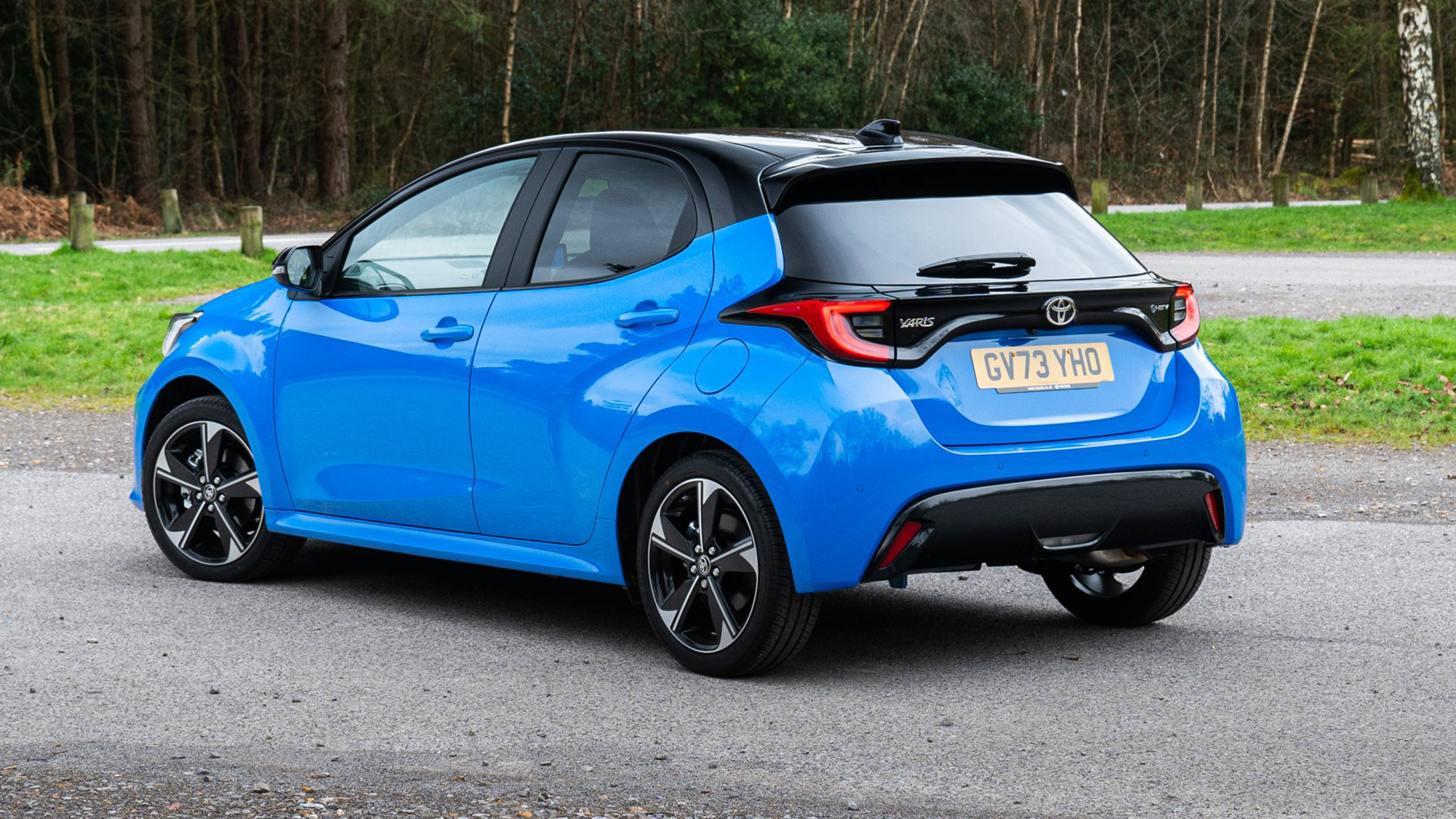
Both models feature a 10.5-inch infotainment display as standard and a comfy leather gear selector handle, too. Not that you need to use it much…
What about new tech?
The Yaris’ driver aid systems have also been upgraded to make what was already a EURO NCAP five-star-rated hatchback even safer on the road. The safety cameras and radars fitted to the Yaris can now scan wider and further than before, meaning software like the Pre-Collision System can now detect a wider range of potential hazards, including motorcycles for the first time.
But the safety improvements don’t stop there. Toyota has introduced a raft of features to the Yaris that will adjust the speed of the vehicle depending on the dangers it detects ahead.
For example, a new Acceleration Suppression system will slow the Yaris down if it detects the car is accelerating toward a vehicle ahead, while the new Proactive Driving Assist feature will assist in gently decelerating the car upon approach to a slower vehicle or a corner.
What are the specs?
The Premium and GR Yarises share the same performance specs with a top speed of 109mph, a 0 to 62mph time of 9.2 seconds and a claimed WLTP fuel consumption rating of 67.2 mpg while CO2 emissions for the two top-level Yarises is at 95g/km.
Moving down the range and the Design trim Yaris retains the same 114bhp output, along with a top speed of 109mph, a 0 to 62mph time of 9.7 seconds and a marginally better fuel economy of 70.6mpg. Emissions? Just 91g/km for a Yaris in this specification.
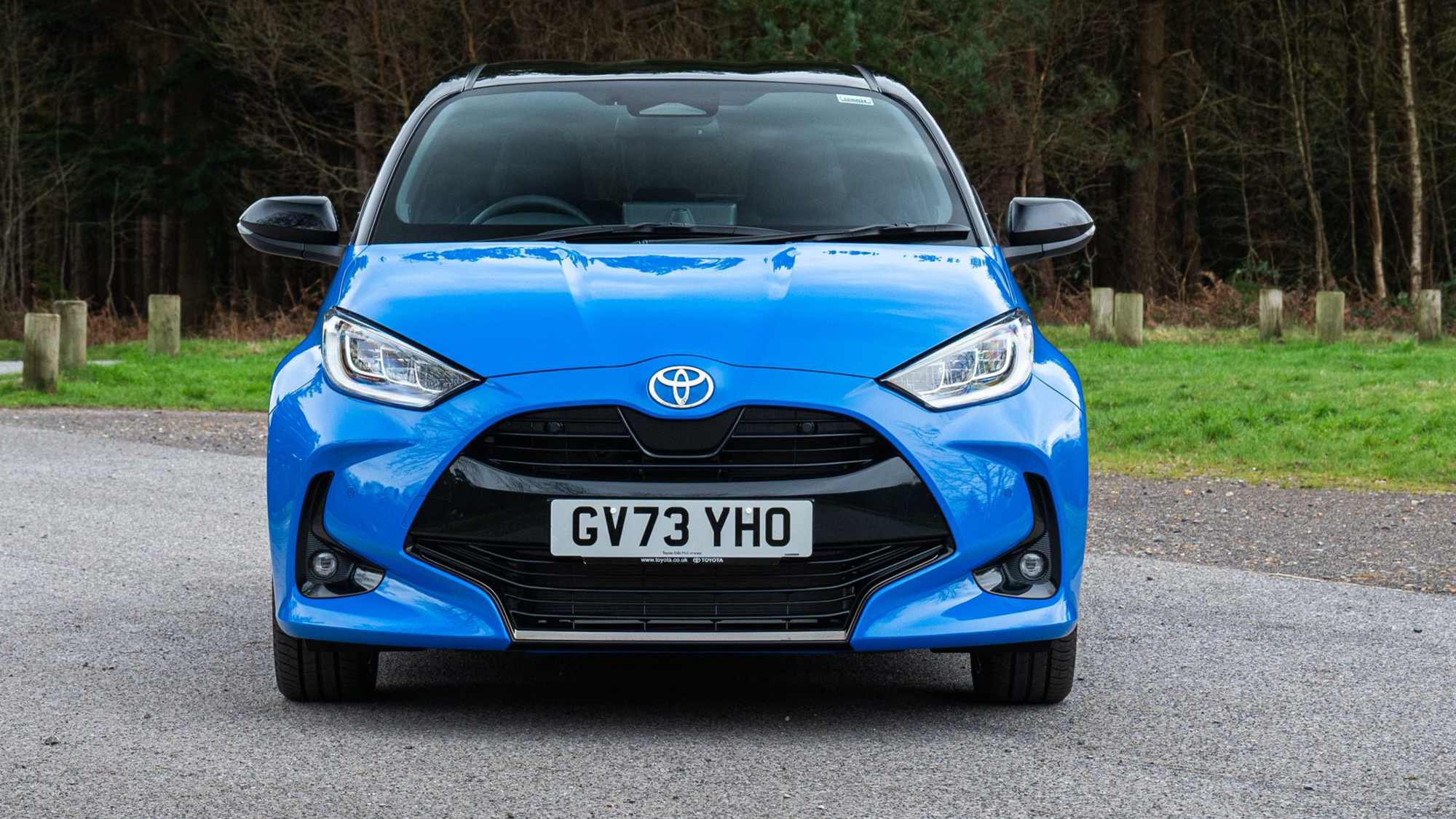
The latest Yaris is supported by the smallest adaptable platform yet, known internally as TNGA-B. Adopting this platform allows the Mk4 Yaris to be 5mm shorter, 50mm wider and 40mm lower than the Mk3, with a 50mm longer wheelbase to generate additional interior space.
As for the car’s dimensions, they’re consistent across the range, with an overall length of 3,940mm, width of 1,745mm and a height of 1,500mm. That’s a tad shorter and narrower than a Vauxhall Corsa and a dash shorter than the Peugeot 208, but the differences are marginal.
It’s certainly an improvement for taller passengers sat in the rear, with foot space beneath the front seats and a sensible amount of kneeroom that simply doesn’t exist in, say, a Renault Clio.
Those up front also sit lower to the ground by 21mm, and the added width means they also sit 20mm further apart. That extra girth is unique to models sold outside of Japan: the flexibility of the platform means Japan-spec Yarises are narrower to better suit local needs.
This new structure is around 20kg lighter than the outgoing Yaris, but also 37% stiffer, with more of the weight concentrated lower down in the car’s structure. This same architecture can also house a compact four-wheel drive system – reserved specifically for the GR Yaris hot hatch, in Europe, at least.
How does it drive?
Toyota’s been building hybrids since 1997, and you know what? It’s pretty good at it.
The old Yaris left a lot to be desired, but this latest ‘self-charging’ drive system is brilliant. Quiet, smooth, and of course, hugely economical.
The Yaris is an all e-CVT affair. It ain’t half bad either (more on that later). While Toyota reckons that a 1.0-litre non-hybrid might come to the UK in the next two to three years.
The 1.5-litre engine used here is a three-cylinder version of the 2.0-litre, four-cylinder found in the Corolla, utilising the Atkinson cycle and running a high compression ratio of 14:1.
It’s linked to a new electrical motor producing 80bhp and 104lb ft of torque, along with a lighter lithium-ion battery pack and drives the front wheels via a CVT automatic gearbox.
This Mk4 Yaris is the first to use this new type of battery pack, allowing double the recharge capacity and 50% more output. Locating it beneath the rear seats not only prevents it from eating up boot space, but also allows for the battery pack to remain cool through the use of the cabin’s air temperature – negating the need for a stand-alone liquid cooling system, hence resulting in a 12kg weight saving over the old version.
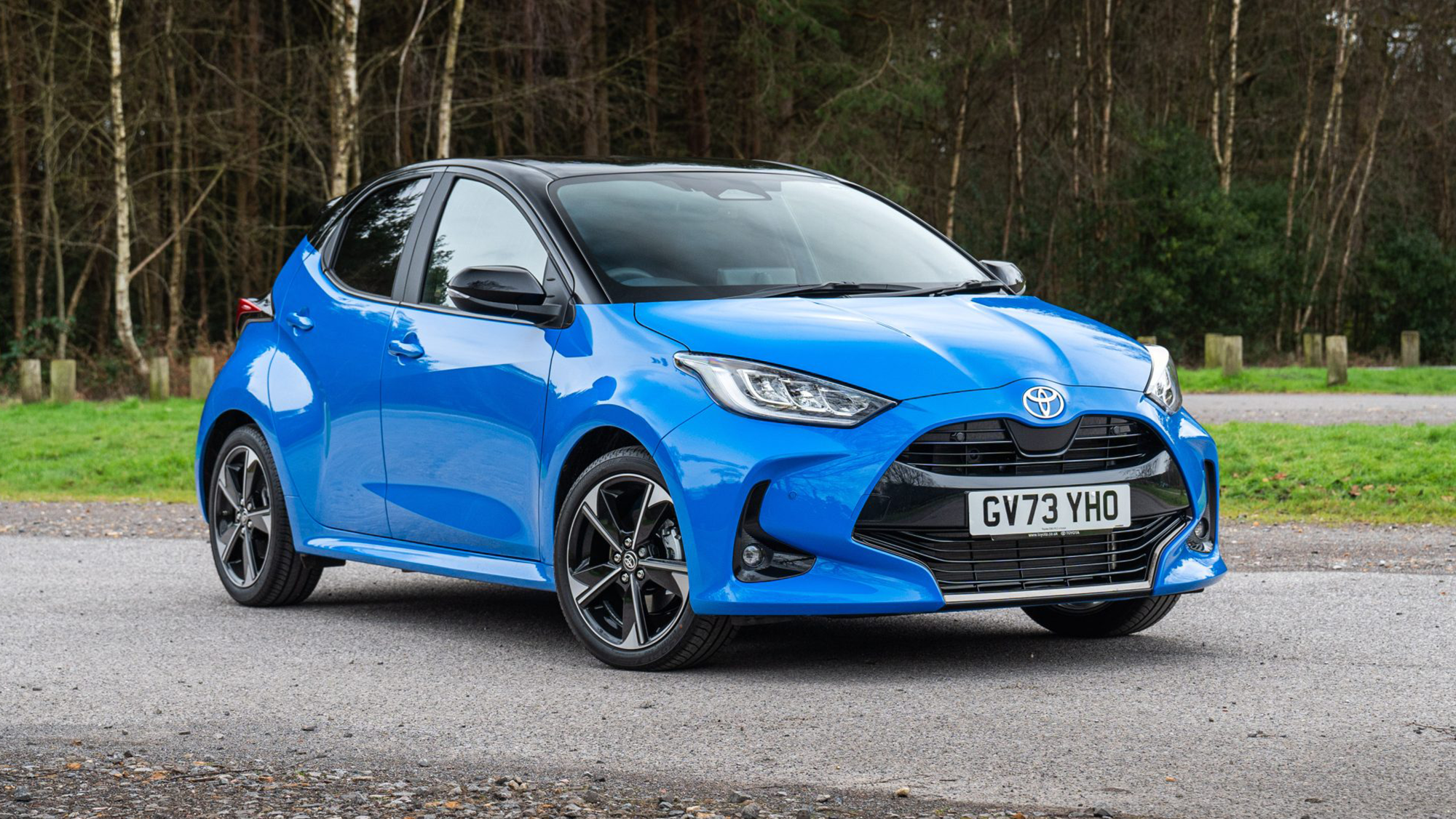
The beefier battery helps the Yaris operate in pure EV mode for around 80% of the time in typical urban journeys and can be driven up to 80mph before the petrol engine kicks into life – that’s 55mph higher than the previous version.
All in all, there’s 16% more power than the outgoing Mk3 Yaris Hybrid, and yet a 20% reduction in CO2 emissions – win-win.
Power from the petrol engine is up from 101bhp to 118bhp, with a 0-62mph time of 10.3sec – a claimed two seconds quicker than the previous version. CO2 emissions see a 26g/km drop over the previous model, rated at 86g/km under WLTP conditions.
The other headline figure Toyota is keen to point out relates to the improved torque delivery during overtaking speeds of 49-74mph, with a reduction in time of two seconds, down to 8.1sec.
Remember the term ‘rubber band’?
Toyota’s been building hybrids since 1997, and you know what? It’s pretty good at it.
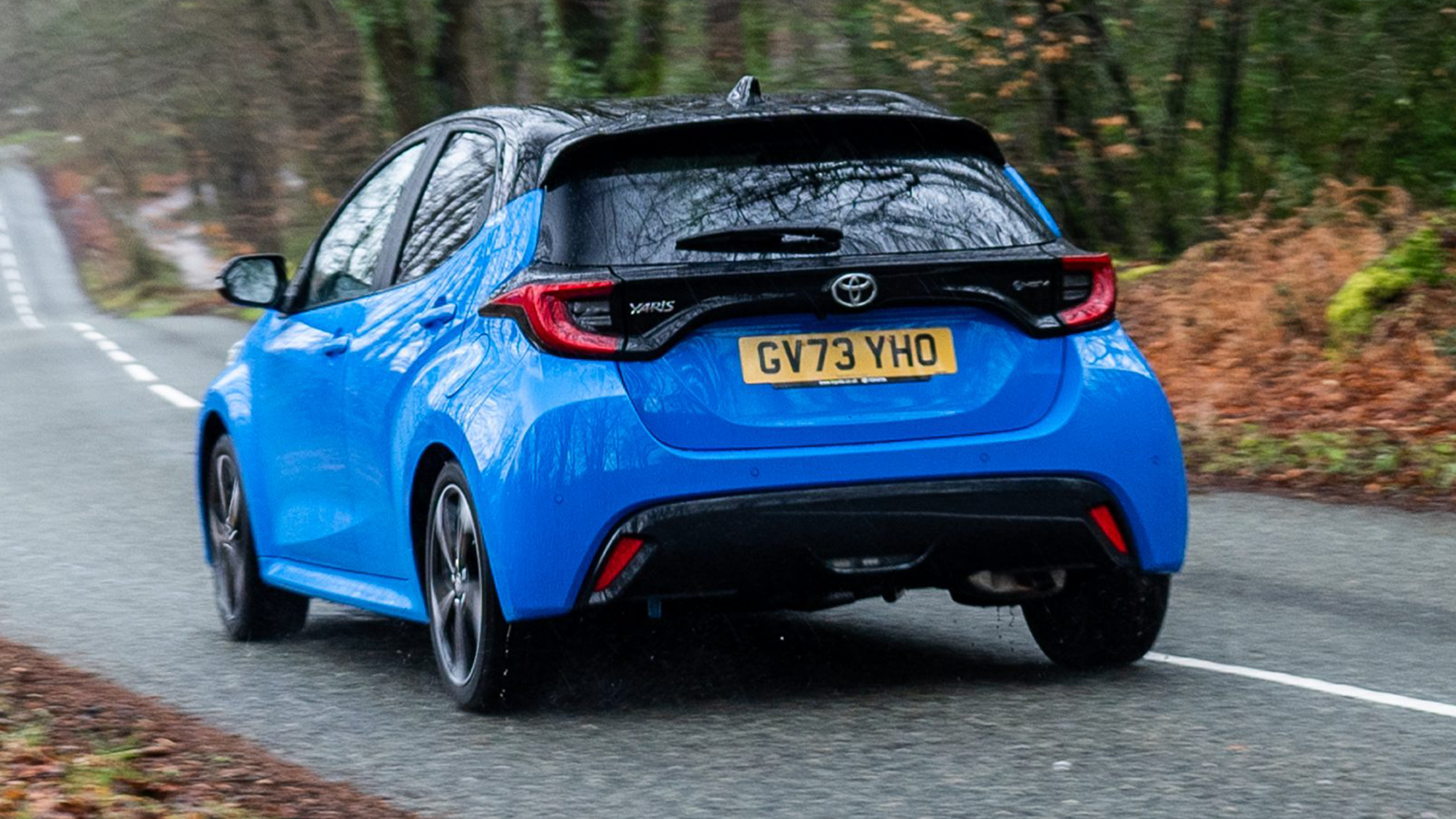
The old Yaris left a lot to be desired, but this latest ‘self-charging’ drive system is brilliant. Quiet, smooth, and of course, hugely economical. The Yaris is an all e-CVT affair, and while those who remember driving Toyota hybrids of old will most likely remember the tedious experience of getting one to accelerate up to any desired speed, this latest Yaris performs with a noticeable step-up in response in stop-start traffic.
You can set off from stationary with little hesitation now, leaving BMW 320d drivers fumbling behind as they wait for their start-stop system to finish cranking their engine back to life. It’s genuinely entertaining.
This is one of the best CVTs around. It’s a huge step up from the outgoing model, with very little of that elasticity feeling, where it sounds like the revs are rising but you’re not actually going any faster.
The 1.5-litre engine is remarkably quiet too, which goes some way in explaining why acceleration is less tortuous on your eardrums.
One thing we can be certain is the engine being far more hushed than it used to be, even when working hard. Its deeper-sounding, thrummy three-cylinder tone doesn’t sound like it’s in pain, and there’s little vibration coming through into the cabin, making for a relaxed place to spend time in when tackling city traffic.
The most noticeable noises filtering through into the cabin typically stem from the electrical hardware, whining away under acceleration and during braking at low speeds. Drive around in B mode and the regenerative braking system makes it worse, sounding like a generator kicking in every time you lift off the accelerator. That said, it’s mainly noticeable when you don’t have the radio on and if you opt for the JBL sound system, there’ll be plenty of speakers willing to help sort that out.
Combining this energetic response with its sharper steering and stiffened up chassis, and you have a Yaris that feels agile enough for you to dart around and have some fun around town – or at the very least, feel like you’re making effective progress.
You can choose from three drive modes: EV only, Power and Eco. Power makes the steering feel a little heavier, although doesn’t really offer much more in the way of communication. Eco simply dulls everything down and coasts at every opportunity. EV attempts to keep things using just electricity for as long as possible.
Shift the gearlever down to B mode for regenerative braking and it’s not too abrupt at trimming off speed – so it’s not like a BMW i3 – but useful enough in town without being too violent on the brakes.
Our biggest reservation with the Yaris is the ride quality. The cars we tested had 16, 17 and 18-inch wheels in GR Sport spec, getting firmer each size up.
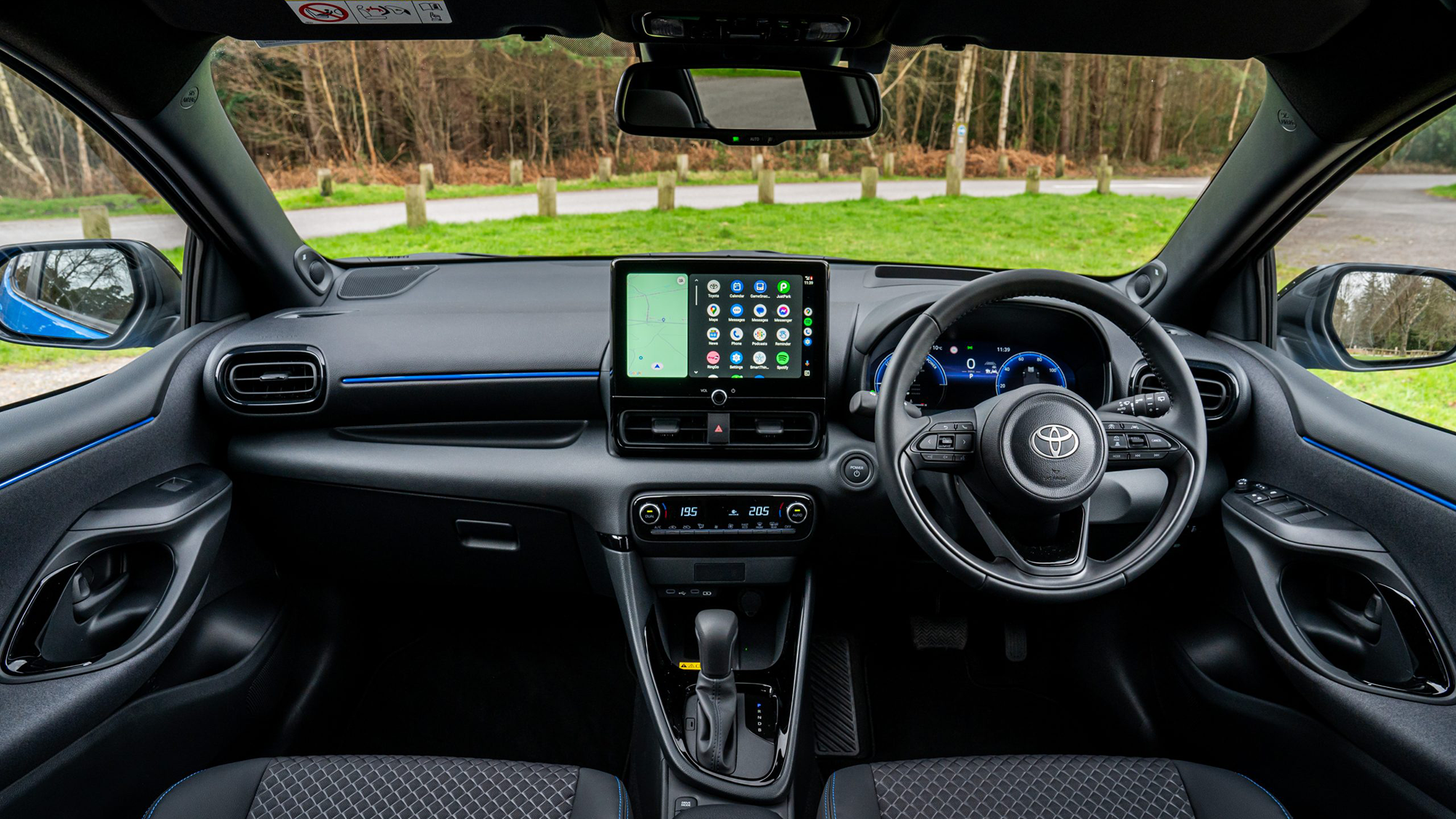
As for the 129bhp models, it’s largely the same story. The engine and gearbox combination work well together in tandem, with zero extra noise owing to an all-electric power increase.
The set-up is undoubtedly intended to satiate European tastes. The ride is firm. Not Fiesta ST firm, but too firm for your average Yaris driver. The main ways this can be felt is at low speeds through rough surfaces. On the motorway you may not notice, but at low speeds down country lanes with rough surfaces, the ride became aggrieving and particularly in GR Sport spec. Cars with 16-inch wheels felt more compliant with higher tyre profiles, so this is probably the spec to go for if you value comfort.
However, we did find the Yaris’ stiffness helped in holding ground through corners. Dial in some more lock mid bend and you’ll be met with acres of grip to help for your confidence.
Functional cabin that’s now up to date
Functional is really the best word to describe the interior. It works. Everything is where you’d imagine it being. There’s very little to actually annoy you. The plastics feel sturdy, the use of textures on the door cards are pleasant to touch and the diamond-patterned seats are more akin of something from a DS product.
The dash itself is dark and monotone though, but you can choose two silver colour schemes for the seats and door inserts to contrast against this. The Renault Clio still possesses the ability to have the brightest cabin, the Peugeot 208 feels the most futuristic, while the Yaris remains a more colourful place to spend time in compared with a Ford Fiesta, while leaving the Suzuki Swift far behind in the previous decade.
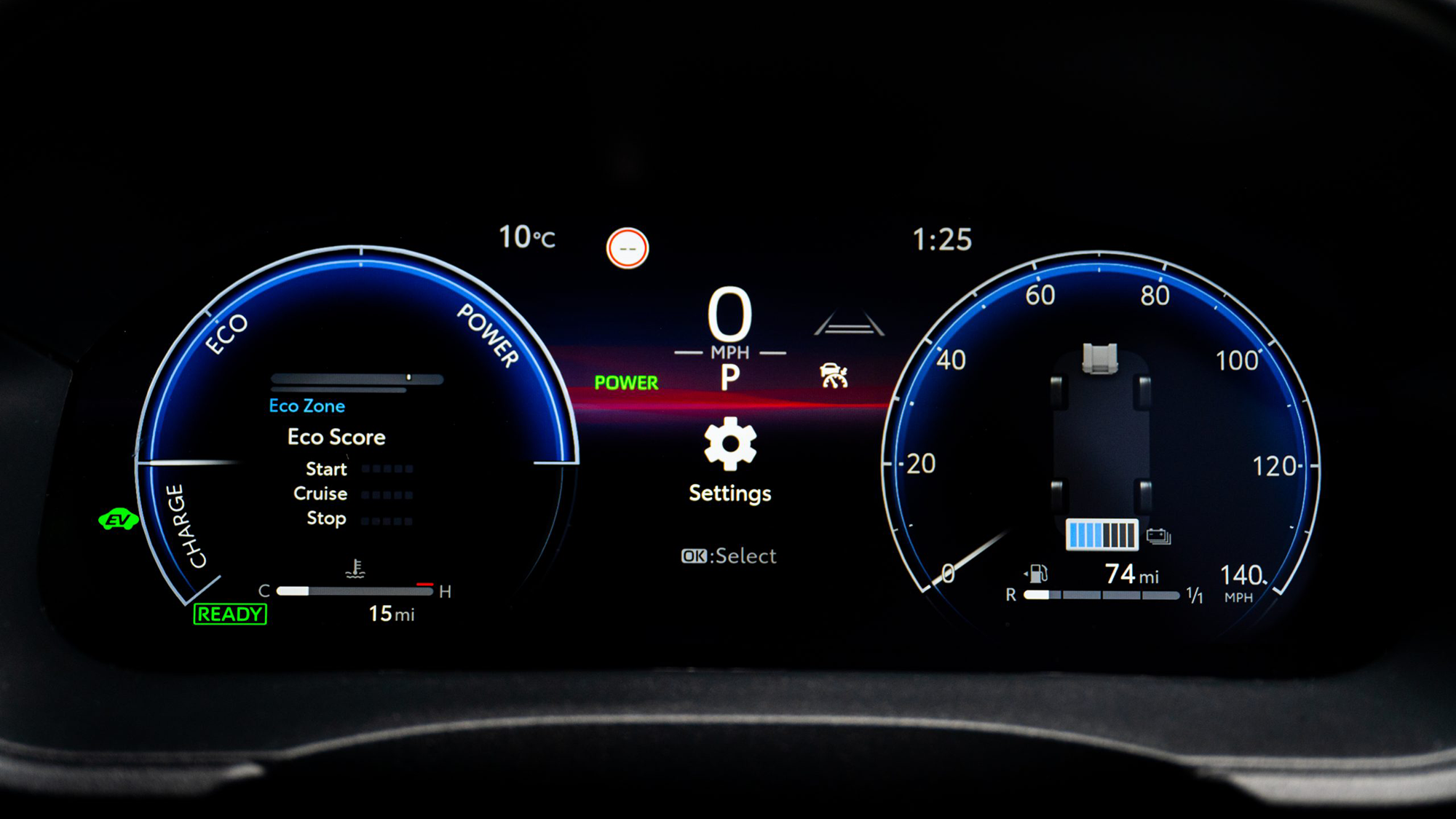
Sit in the driver’s seat and the instrument panel consists of two circular, digital screens sitting either side of a trip computer. They’re easy enough to read, but not bright enough and we wouldn’t be surprised if entry-level models come with traditional dials though.
How much will the new Yaris cost?
The range starts from £22,630 with the Icon and works its way up to £28,925 for the range-topping Premium Edition. As for finance, Toyota is offering 4.9% APR and £1,000 Deposit Contribution PCP deal on new retail orders of Yaris, along with its incomparable 10 years/100,000 miles warranty.
Verdict
If the last Yaris never made it onto your radar, it certainly has a chance of doing so now. There’s added performance, driving fun and style thrown into the mix, while keeping those headline running costs down. The upgraded 2024 models are even more of a laugh, while comfier and better equipped to keep you safe. If you already liked the Yaris, it is better than ever, except now you’ll have fun driving it around town and not solely ride the feel-good factor of being a little more environmentally responsible.
What would stop you from getting one? Those who want the driving fun of a Ford Fiesta down a country road will continue to look elsewhere, and that occasional jittery ride might spoil the overall driving experience.